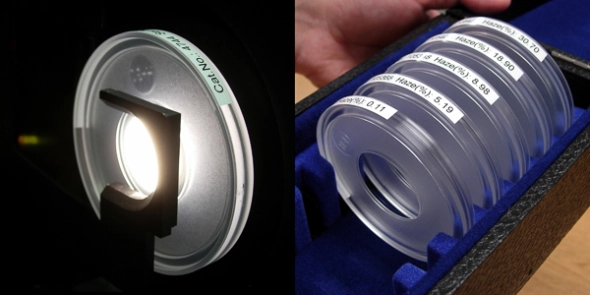
Haze 30 standard (R) as part of a D1003- calibrated set (L) of 1%, 5%, 10%, 20%, 30% haze standards (HL# CMR-2760).
FAQ: “We have a scientist here who is looking at films containing small bubbles and attempting to do measure them by measuring Haze% on a HunterLab spectrophotometer. I suspect her problem in obtaining numbers that “make sense” from what you get from just eyeballing the samples (and trying to look through them at the outlines of a object behind the film to gage the amount of regular transmittance) is that her samples have Haze% > 30 %, which means that a spectrophotometer (or even a haze meter) isn’t the appropriate tool to use for the analysis.
How is transmission haze measured at levels > 30%?”

